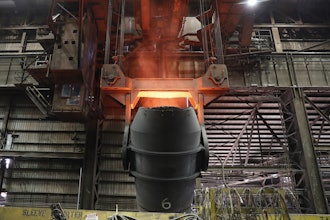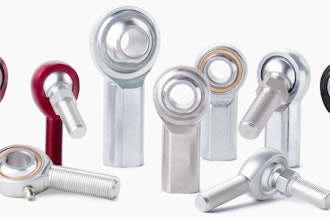
It’s been 77 years, and yet there are always some surprises in our annual Survey of Distributor Operations. But in this year’s report, we had to dig for them.
That’s because the biggest takeaways – distributors top business concerns – tended to be the same list as we’ve reported the past two years, though increasing in intensity.
Likewise, we hear from distributors that, just as there are challenges, there are major opportunities and we hope to explore the good and bad in the following pages.
As always, Industrial Distribution’s Survey of Distributor Operations aims to provide a snapshot of the industry and how distributors are faring across an array of operating areas. The coming pages will examine seven main categories:
Demographics — establishes a profile of survey respondents based on company size, years in business, sales volume and product line.
Challenges, Trends & Economy — outlines the initiatives distributors are undertaking to address key business and market concerns, as well as mergers and acquisitions and how distributors view the impact of the economy.
Tech Usage & Investments — covers areas like e-commerce and other big-impact technology solutions for now and the future.
The Balance Sheet — offers insights into revenues and profitability, addressing areas of investment, concern and other analysis of factors impacting revenue.
Best Practices — sheds light on distributor relationships with suppliers and customers, as well as their global business plans and what challenges are involved.
Value of the Distributor — addresses the reasons our survey respondents believe customers do business with them, and which service offerings play a significant role in the industry.
Employment — identifies hiring and layoff trends, recruitment and compensation.
Methodology
The results of this study are based on an email survey sent to Industrial Distribution subscribers in April and May of 2024, with a collection time of three weeks. Recipients of the survey were offered an incentive to complete the questionnaire. The majority of ID's subscriber base is comprised of readers who identify as executive, upper management, sales or sales management. Results are based on our pool of survey respondents within this subscriber base.
Comments on this year's results? Email ID executive editor Anna Wells at [email protected].
Demographics
As is generally typical, more than a third of our survey respondents represent companies hailing from the Midwest, with another 20% from the Northeast. Uniquely, the third-most represented segment are companies whose headquarters sit outside the United States.
This year’s survey pool is fairly evenly divided on company size. While the largest group of respondents – 26% – hail from distributors that generate $10 million or less in sales each year, the second-largest group is at the opposite end: 17% say they represent companies who sell $500 million or more annually. Still, from a cumulative perspective, the smaller companies dominate the data here: all told, 61% represent companies with $50 million or less in annual revenue.
Despite the variety in company size, three out of four respondents say they work for a family-owned business. And while this is a significant marker, it’s still below the national average for companies of any type. Specifically, Fortune says that 87% of American businesses are family-owned or controlled; whereas our survey respondents hit a high water mark of 78% family-owned in 2005, each year’s pool has fluctuated. Perhaps this speaks to the impacts of consolidation on this industry over the past two decades.
As for each company’s longevity in the market, the group skews slightly newer compared to last year. For example, our 2023 report showed more than half (52%) from distributors that were 50 years or older. This year, that group stands at 48%. Eighty percent of our respondent pool represent companies 25 years or older, compared to 85% who said the same in last year’s report.
We asked our survey respondents to identify the end markets into which they sell products, and the results align well with what we know about the Industrial Distribution readership: 83% sell into manufacturing and processing markets. Other widely represented categories include:
- Construction: 64%
- Energy: 57%
- OEM: 55%
- Machine shops: 51%
- Mining: 50%
Regarding product categories, distributors, generally, continue to expand their focus. In many cases, the specialty distributor of decades past has been replaced by category experts that carry complementary product lines — even one-stop shops. External pressures, including the rise of e-commerce, have changed procurement and, thus, forced distributors to add depth. With that said, 58% of our respondents claim to have expanded the number of product lines they carry over last year. Only 2% say they carry fewer product lines. Although this expansion is steady, it’s still not as high as the levels at which we saw distributors expand in past years. For example, in 2012, a whopping 73% said they’d expanded. Last year, 64% said the same.
Despite steady product line expansions, the following maintained top positions in terms of which categories our respondents tend to sell:
- MRO 54%
- Safety 40%
- Hand tools 36%
- Cutting tools 33%
- Adhesives & sealants 33%
- Lubricants 32%
- PPE 31%
- Power tools 31%
Challenges, Trends & the Economy
Industrial distribution sector consolidation activity continues to persist heavily, and in the past few years that’s been partly fueled by the pandemic as businesses took advantage of timing.
In an article for our February issue, Kevin Sargent – managing director of the industrial distribution investment banking team at Brown Gibbons Lang & Co. – shared his firm’s prediction that 2024 would continue to be an active year, pointing to record capital pouring into the market via private equity, along with the probability of lower interest rates driving positive sentiment. In addition to those factors, the industry is also experiencing strong margins, although it’s clear that many companies are seeing shrinking growth after the unique conditions of the post-pandemic market led to ballooning profits in 2023.
Still, many suggest that they are involved in the consolidation discussion, whether they want to be or not. When asked how mergers and acquisitions have impacted their businesses in the past 12 months, fewer than half were not involved in any related conversations. Of the rest:
- 6% merged or were acquired.
- 22% were approached but a deal did not take place.
- 26% were a pursuer of a merger or acquisition.
- 36% say they’d be agreeable to a buyout, which is the same percentage of respondents as last year. In 2022, just 23% said their business was amenable to being acquired.
Meanwhile, a full one-third of respondents said their company was actively looking for other businesses to acquire.
While 19% cited mergers and acquisitions as a top business concern this year, many other challenges ranked much higher for distributors. This year, the biggest concern for distributors, like last year, is the economy, with 60% placing it in their top three. Following this are:
- Increasing operating costs (48%)
- Inflation (36%)
- Finding more qualified people (34%)
- Price competition (31%)
For many distributors, price competition has become a larger issue due to the transparency of online selling. That trend could become an impediment for distributors as they look toward growth. The vast majority of our surveyed audience (81%) said that their primary growth strategy is to grow sales among existing customers. Other goals point towards support of this organic growth and include:
- Adding to customer base (69%)
- Taking market share from specific competitors (31%)
- Focusing on a growing industry (27%)
- Training existing salespeople (20%)
Low on this list is diversifying into new markets, evidence that industrial distributors acknowledge that the market they are in is healthy and ripe with opportunity. Will these companies be stymied by added pressures such as an increasingly volatile climate, geopolitical upheaval or an unthinkable pandemic? Distributors are pretty confident in their abilities to handle a critical problem, with 64% characterizing their company’s disaster response abilities to be “excellent” or “good.” Only 4% say their business is poorly equipped to handle such events.
Tech Usage & Investment
The distribution industry continues to make inroads when it comes to the digitization of their businesses, though not all companies are embracing change at the same rate.
In early 2021, as the business world still sat squarely under the thumb of COVID-related impacts, nearly 90% of our survey respondents said they considered e-commerce to be a priority. By 2023, that number had dropped significantly to a figure closer to what’s been historically maintained for several years — 52%. This year, we see some gains in the emphasis on e-commerce, with 61% saying it’s a priority. Still, distributors say they’re keeping their content fresh, with three out of four attesting to redesigning their websites within the past three years and only one in five saying they “hardly ever” update them.
Below the surface, this may mean that companies have gained confidence in crafting an online presence that’s less about transactional sales. To that end, 60% of respondents say they primarily use their website for marketing, 46% for housing technical information, 45% to generate leads and 37% to find new customers. Fifth on the list was traditional e-commerce sales.
Additional questions revealed the following:
- The most popular technologies being utilized in distributor businesses right now are wireless technology (70%), CRM (68%), e-commerce (59%) and ERP (51%).
- The technologies distributors say have had the biggest impact on their businesses are CRM (46%), ERP (27%) and online ordering (25%).
When we asked our subscribers which technology they were most likely to implement within the next two years, the most popular answer was artificial intelligence (AI), which 37% said they had in their plans. Many distributors are also leveraging the value of data and business intelligence, with 63% saying they currently utilize those technologies to inform their decisions.
Ultimately, the push towards a more tech-forward business model is paying off, if only incrementally. Half of respondents say they are generating web-based revenues at this time, although for the majority (75%), their percentage of sales via the web is 10% or less. This has remained fairly consistent over time but, again, speaks to the more complex approach industrial distributors often take to value-added selling, which may not lend itself as well to a simple transactional hub. And our data suggests that it’s still part of the strategic plan to boost these figures: 69% say they plan to increase web sales in the coming year.
The Balance Sheet
Last year, 72% of our poll participants said their sales had increased compared to the year prior — a figure that dipped from 83% in 2022 as businesses emerged from the pandemic. This year shows a dramatic decline, with just fewer than half (49%) attesting to sales increases, with 32% adding that their sales had stayed the same. That leaves one in five who have experienced sales declines. Profit declines were also reported by 22% of surveyed companies, compared to 45% who reported profit increases. In 2023, our report cited 75% of respondents claiming that profits had increased.
Despite this notable slide in profitability, distributors still appear to be optimistic about their prospects for the year ahead: while 12% anticipate decreased sales, 65% say their sales will increase and 23% believe they will remain consistent with this year. And as for the role of inflation in this scenario, distributors had a fairly varied experience:
- 7% said inflation has significantly shrunk margins.
- 39% said it has moderately shrunk margins.
- 22% said it’s had little to no impact on margins.
- 38% said it’s had an impact, but they’re raised prices to counteract it.
As distributors tackle these challenges, they must also place a priority on business measures designed to counteract them. For distributors responding to our survey, the growth tactics they consider critical include:
- Advertising/marketing (55%)
- Adding product lines (44%)
- Hiring technical employees (42%)
- Improving/redesigning website (37%)
On Thursday, part two of the 2024 Survey of Distributor operations, featuring industry hiring trends, best practices, and how companies are putting prices on value-added services.























